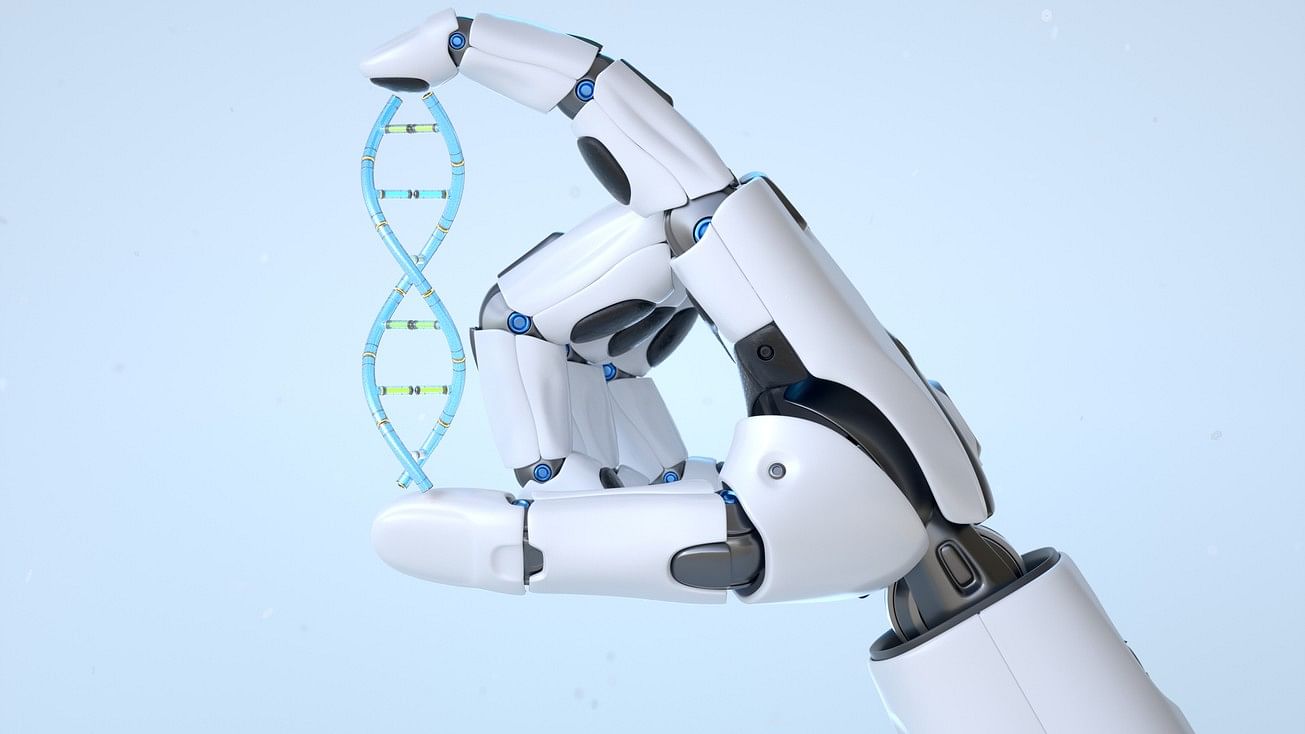
Representative image.
Credit: iStock Photo
By Tanya Lewis for Scientific American.
Antibiotic resistance is among the biggest global threats to human health. It was directly responsible for an estimated 1.27 million deaths in 2019 and contributed to nearly five million more. The problem only got worse during the Covid pandemic. And no new classes of antibiotics have been developed for decades.
Now researchers report that they have used artificial intelligence to discover a new class of antibiotic candidates. A team at the laboratory of James Collins of the Broad Institute of the Massachusetts Institute of Technology and Harvard University used a type of AI known as deep learning to screen millions of compounds for antibiotic activity. They then tested 283 promising compounds in mice and found several that were effective against methicillin-resistant Staphylococcus aureus (MRSA) and vancomycin-resistant enterococci—some of the most stubbornly hard-to-kill pathogens. Unlike a typical AI model, which operates as an inscrutable “black box,” it was possible to follow this model’s reasoning and understand the biochemistry behind it.
The development builds on previous research by this group and others, including work by César de la Fuente, an assistant professor in the department of psychiatry at the University of Pennsylvania’s Perelman School of Medicine, and his colleagues. Scientific American spoke with de la Fuente about the significance of the new study for using AI to help guide the development of new antibiotics.
[An edited transcript of the interview follows.]
How significant is this finding of a new class of antibiotics using AI?
I’m very excited about this new work at the Collins Lab—I think this is a great next breakthrough. It’s an area of research that was not even a field until five years ago. It’s an extremely exciting and very emerging area of work, where the main goal is to use AI for antibiotic discovery and antibiotic design. My own laboratory has been working toward this for the past half-decade. In this study, the researchers used deep learning to try to discover a new type of antibiotic. They also implemented notions of “explainable AI,” which is interesting, because when we think about machine learning and deep learning, we think of them as black boxes. So I think it’s interesting to start incorporating explainability into some of the models we’re building that apply AI to biology and chemistry. The authors were able to find a couple of compounds that seemed to reduce infection in mouse models, so that’s always exciting.
What advantage does AI have over humans in being able to screen and identify new antibiotic compounds?
AI and machines in general can systematically and very rapidly mine structures or any sort of dataset that you give them. If you think about the traditional antibiotic discovery pipeline, it takes around 12 years to discover a new antibiotic, and it takes between three and six years to discover any clinical candidates. Then you have to transition them to phase I, phase II and phase III clinical trials. Now, with machines, we’ve been able to accelerate that. In my and my colleagues’ own work, for example, we can discover in a matter of hours thousands or hundreds of thousands of preclinical candidates instead of having to wait three to six years. I think AI in general has enabled that. And I think another example of that is this work by the Collins Lab—where, by using deep learning in this case, the team has been able to sort through millions of chemical compounds to identify a couple that seemed promising. That would be very hard to do manually.
What are the next steps needed in order to translate this new class of antibiotics into a clinical drug?
There’s still a gap there. You will need systematic toxicity studies and then pre-IND [investigational new drug] studies. The U.S. Food and Drug Administration requires you do these studies to assess whether your potentially exciting drug could transition into phase I clinical trials, which is the first stage in any clinical trial. So those different steps still need to take place. But again, I think this is another very exciting advance in this really emerging area of using AI in the field of microbiology and antibiotics. The dream we have is that hopefully someday AI will create antibiotics that can save lives.
The compounds identified in this new study were effective at killing microbes such as MRSA in mice, right?
Yes, they showed that in two mouse models, which is interesting. Whenever you have mouse infection data, that’s always a lot more exciting—it shows those compounds were actually able to reduce infection in realistic mouse models.
As another example of using AI, we recently mined the genomes and proteomes of extinct organisms in my own lab, and we were able to identify a number of clinical antibiotic candidates.
Why is it important that the AI model is “explainable”?
I think it's important if we are to think about AI as an engineering discipline someday. In engineering, you’re always able to take apart the different pieces that constitute some sort of structure, and you understand what each piece is doing. But in the case of AI, and particularly deep learning, because it’s a black box, we don't know what happens in the middle. It’s very difficult to re-create what happened in order to give us compound X or Y or solution X or Y. So beginning to dig into the black box to see what’s actually happening in each of those steps is a critical step for us to be able to turn AI into an engineering discipline. A first step in the right direction is to use explainable AI in order to try to comprehend what the machine is actually doing. It becomes less of a black box—perhaps a gray box.